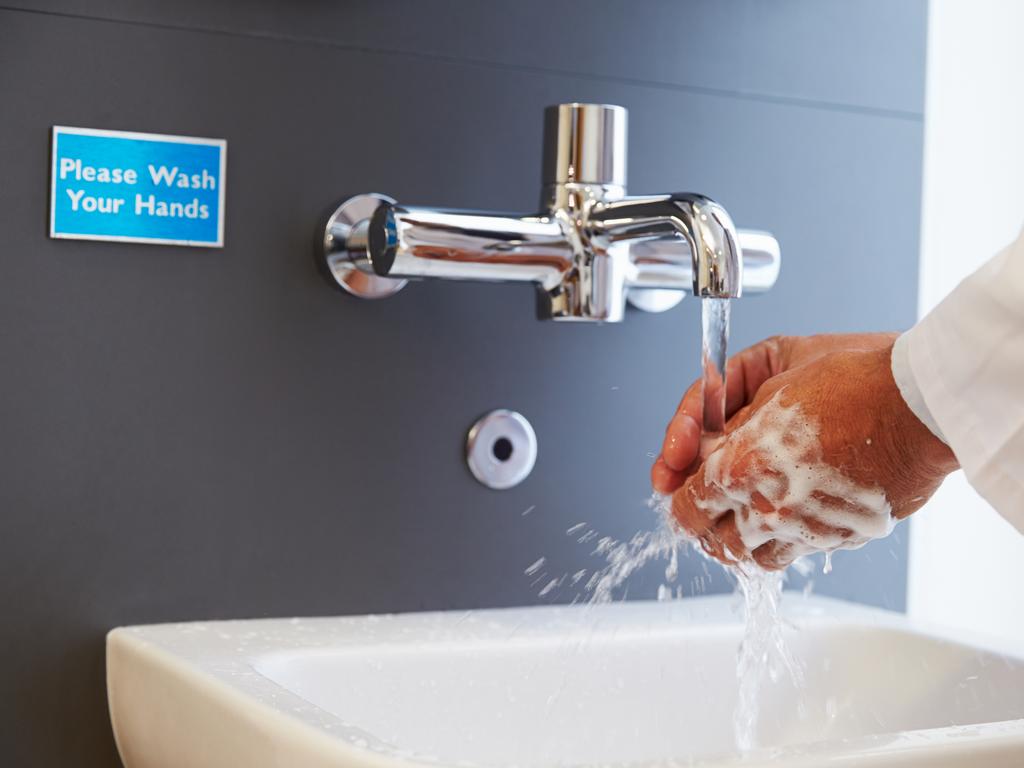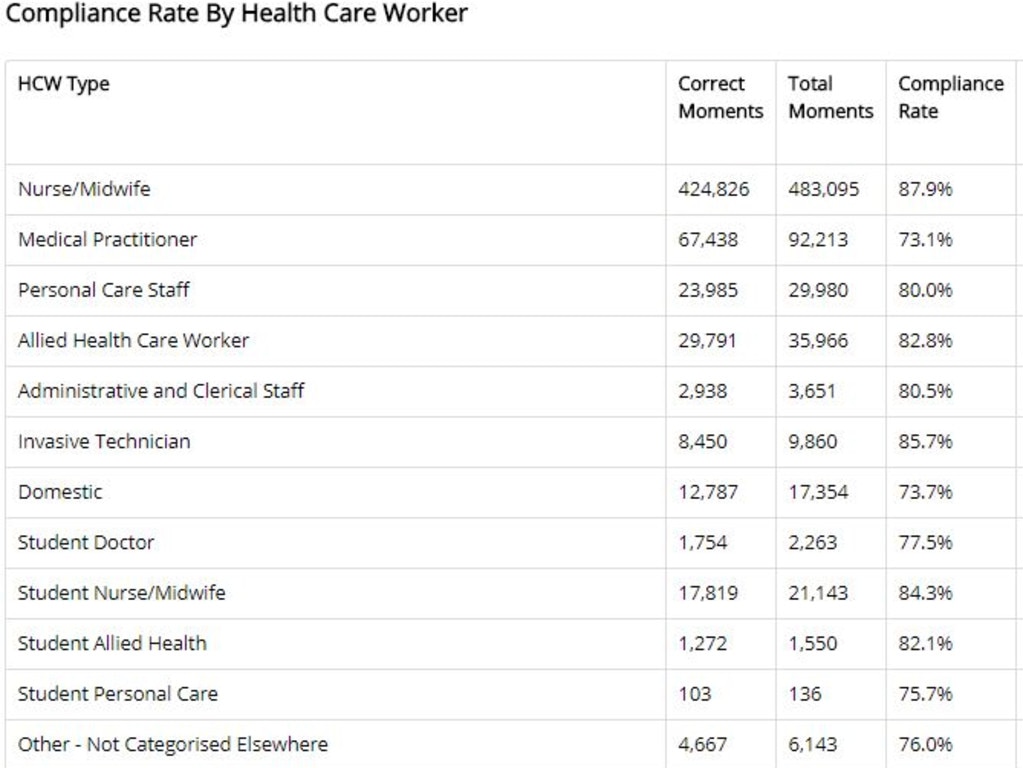Australian doctors picking up disgusting habit, study finds
DOCTORS and nurses at major hospitals around the country could be putting patient’s lives at risk by not washing their hands, a study has found.
BEING in the medical field is one of the main professions where you expect upstanding personal hygiene, but a worrying study has found that major Aussie hospitals could be slipping behind in this area.
Research from the University of NSW found that once staff at a major Sydney hospital were no longer being monitored by another person, hand washing rates dropped from 94 per cent to 30 per cent.
The study found that when compliance monitoring was replaced with a machine rather than a person, doctors and nurses were more likely to neglect washing their hands.
The automated surveillance consisted of automated dispenses at sinks and bedsides that recorded how often it was used, while the human observation involved someone physically being their to monitor the hand hygiene compliance.
In 2017 the National Hand Hygiene Benchmark set by the Australian Health Ministers’ Advisory Council (AHMAC) was raised to 80 per cent in order to meet the high compliance expectations of hand hygiene.

Lead author of the study and UNSW Medicine Professor Mary-Louise McLaws said the results were “gravely concerning”.
“Regular hand hygiene among healthcare workers is a cornerstone of hospital hygiene to prevent the transmission of pathogens and potential infection,” she said.
“In our study, we found that as soon as human eyes were off the clock outside of the mandatory 20-minute audit and our automated method continued to monitor compliance, hand hygiene compliance went from 94 per cent to 30 per cent.
These results call into question the reliability of hand hygiene compliance data found by Hand Hygiene Australia (HHA).
HHA is the national program that tracks compliance in hospital’s around Australia, but it relies heavily on having human auditors present.
The most recent data found that compliance rates have increased to 84.7 per cent this year, compared to 64 per cent in 2010.

But considering how significantly compliance dropped when there wasn’t someone around to monitor it in person there is a possibility these results are not as accurate as previously thought.
Even if this is the case, the HHA data still found that ten major NSW hospitals fell below the national benchmark compliance rate.
Some of the underperforming hospitals included Manning Hospital, Gosford Hospital, Wagga Wagga Hospital, Royal North Shore Hospital and Griffith Hospital, with ratings ranging between 74.5 per cent and 77.2 per cent.
The data also found that medical practitioners have one of the lowest compliance rates compared to other hospital staff.
Just 67 per cent of medical staff washed their hands before touching a patient and even less did so after coming into contact with a patient’s surroundings.
Over all, medical practitioners had a compliance rate of 73.1 per cent, with the only other hospital staff with a lower score being those working in an Ambulance at 56.3 per cent.
Those working in the dental field had the highest rates of hygiene compliance, with rates ranging from 90 per cent to 94.3 per cent.



